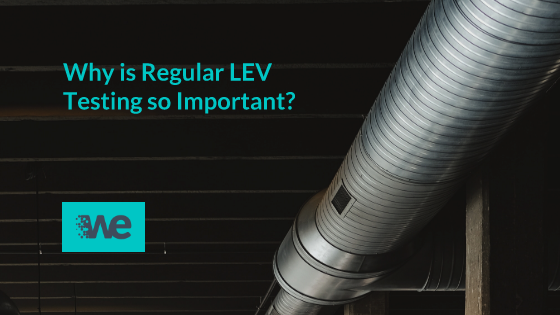Why is Regular LEV Testing so Important?
Local Exhaust Ventilation (LEV) systems are used to reduce the risk of human exposure to harmful airborne substances. In industries where particulates are released into the air, LEV systems can create an effective safety measure.
As an employer, it is vital to have the correct LEV control measures in place. However, you also need to understand the importance or regular LEV testing and maintenance.
What are the Different Types of LEV?
You need to ensure your LEV equipment is designed to fulfil the intended purpose. For example, the size and shape of the LEV hood needs to be appropriate for the specific job.
There are many different types of LEV available. It is important to source professional advice, to ensure you get a solution that is in line with industrial regulations.
- On-tool extraction – Usually a fixed extraction component on the equipment. For example, industrial soldering irons and hand sanders often feature inbuilt extraction capabilities.
- Fixed Capturing Hoods – Often used for mid-sized fixed-location jobs.
- Movable Capturing Hoods – Used to ensure the extraction unit is a close to the source as possible.
- Small Booth – Often used for small spray painting jobs, or where there is the potential for a wide spread of particles to enter the air.
- Walk-In Booth – For large scale jobs such as spray painting large pieces of furniture or in factory production lines.
Why is LEV Testing So Important?
Regular testing is vital to keep your equipment safe, in prime working order, and in line with regulatory changes.
From a compliance perspective, regular LEV testing and maintenance ensures it conforms to the latest HSE standards. More importantly, it helps to protect your employees from work-related harm. The effectiveness of your equipment can change over time. From general wear and tear, increased usage, system or procedural changes, these are all examples of factors which may contribute. However, the impact of a seemingly subtle change in the functioning of your equipment, can indicate a much more marked degradation in its performance.
LEV testing highlights areas of mechanical concern. This helps you to avoid more costly repairs and ensures your equipment continues to run as effectively and efficiently as possible.
It also helps to ensure your equipment is being used correctly. As an employer it is vital to make sure your staff fully understand their responsibilities. Your training provision should also be regularly reviewed.
How Often Should LEV Equipment be Checked?
The COSHH Regulations 2002 oblige companies by law to ensure regular LEV testing is carried out. The regulations state that a thorough examination and test of all the systems, must be carried out, at least every 14 months (Regulation 9). Some LEV systems that handle more hazardous substances, for example carcinogenic substances, or those that cause asthma, may need to be tested more often (Regulation 6 / Schedule 4). This is because the risk of ill health is much higher when the equipment is less effective, or worse still, it fails altogether.
As previously described, the effectiveness of LEV equipment can alter over time. Therefore, testing at least once a year is required to ensure it is still within a good state of repair and is effectively controlling substance exposure.
How Does LEV Testing Work?
LEV testing checks that the equipment is working correctly and effectively:
- It measures a range of parameters and the condition of the entire system is visually inspected.
- It takes into consideration the design of the equipment to conclude whether or not it is performing as intended.
- The information gathered from the test, concludes whether or not adequate control of exposure to hazardous substances is achieved.
The report highlights defects and necessary areas for improvement. In the time between the test diagnosis and maintenance being carried out, the site may need to follow a check list to ensure the equipment is operating to a satisfactory level.
Short, medium and long-term aspects of improvement are considered, depending on the control priorities. The HSE guidance book HSG258 and HSE guidance leaflet INDG408, outline more detail on this subject. It includes how to buy and use LEV, and how the test should be undertaken.
At Workplace Exposure, our LEV testing is carried out by qualified technicians with a broad range of experience working with all types of systems and workplaces.
Ultimately, LEV testing helps to keep your workplace environment safe and in line with legal regulations. It can also save your business time and money.
Please contact us if you would like any further information or assistance – we would be delighted to help.
Our approach
Get in touch with Workplace Exposure, either give us a call on 0800 689 4386, or fill in our enquiry form to discuss your monitoring or consultancy requirements.
We’ll then provide you with a no obligation proposal, we can often give an initial idea of fees whilst we discuss your needs.
Once you’ve accepted our proposal we can then schedule the work.
Following our site visit we’ll provide you with a comprehensive report giving you advice, recommendations and control measures where appropriate.
Implement the outcomes for compliance and a happier healthier workplace.
